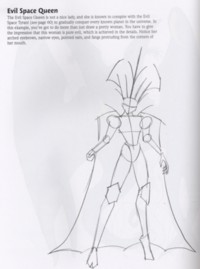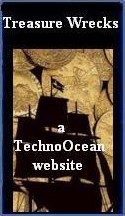|
|
Book Reviews by Edogawa Ranpo
Zap! How To Draw Fantastic Sci-Fi Comics
Bryan Baugh
Watson-Guptill
144 pages
www.watsonguptill.com
Reviewed August 10, 2007
|
|
| Zap! How To Draw Fantastic Sci-Fi Comics is one of a series of books which show people how to draw comics of various genres, published by Watson-Guptill.
There is much to like in this book, written and illustrated by Bryan Baugh, a storyboard artist in the animation industry. Baugh has worked on such cartoons as The Batman, Jackie Chan Adventures and Men in Black. He also writes and illustrates his own comic book creation, Wulf and Batsy. (There's also a bit to criticize, but I'll get to that later.)
Assisting Baugh in this endeavor are artists such as JoJo Aguilar, Bill Bronson, David Hartman, Steve Miller and David White.
The oversized paperback is printed on bright white paper that makes the full color artwork practically jump off the pages.
|
|
The text
Author Bryan Baugh starts out the book with a little over 40 pages of text. First, he explains the difference between science fiction and space opera. He then gives a brif history of science fiction comics, including Alex Raymond's Flash Gordon, Basil Wolverton's Spacehawk, , E. C. Comics, Al Williamson, and Wally Wood.
We're treated to interviews with Monte Wolverton (Basil's son)and Al Williamson.
Then we get into the examples of how to draw various fantastic creatures, from humanoids to aliens to various other creatures.
Each drawing is presented on a full page, or sometimes on two pages, with examples of the initial drawing - the ovals, rectangles, and other shapes that make up the character, before adding the smoothing and rest of it that turns those shapes into a fully realized character.
Baugh gives descriptions of each character, in a light-hearted way. For example he describes his Sonic Noise Droid 808 thusly:
| Originally intended to be an intelligent walking steroe system, the Sonic Noise Droid 808's programming failed terribly during its first party assignment, killing the guests with brain-shattering noise decibels. Becoming dangerously anti-social, it wanders the galaxy, using its powerful speakers to blast enemies with sonic force. |
His tips for doing the drawings are not all that detailed, however. He keeps re-iterating the basics, as in this example for the Torture Bot:
| Although the robot may have a head, body, arms, and legs, there is no human anatomy whatsoever. Look at the separate parts of the body, determine the basic shapes, and then adorn with details, such as rivets, gears, bolts and wires. |
 |
He does give tips on how to give the characters personalities through drawing, for example:
"It's upward tilting face and outward-thrusting chest make it appear to have a proud personality" or
"To make the Evil Space Tyrant massive and dominating, you'll want to design the basic shape of his torso as the letter V. Keep the top of the V (shoulders) very wide and then narrow at the bottom (waist). Making his head small will cause the chest and shoulders to look even bigger. Give him huge hands and have fun developing his costume with scary details.
That's the good stuff.
The flaws? |
Well, nowhere in the text does the author explain how to judge proportions. "The head should be 1/8th the size of the rest of the body, use your thumb as a guide for the chest, the legs should be proportioned thusly, etc." He often comments about getting "used" to drawing the human figure, and "the figure is just a series of squares, cylinders" etc., put together, but that's it.
The book is subtitled "How to draw fantastic sci-fi comics" but it would be more aptly titled "How to draw fantastic sci-fi characters." How to actually draw a comic - a series of panels that tells a story, where to position characters and background in each panel that keep the reader's interest and propel the story along, are not touched upon. And how to ink and color each drawing for maximum effect is not mentioned.
Nevertheless, it's a good, fun reference book and belongs on the shelf of any artist interested in science fiction comics.
 |
Warning! Warning!
Warning!
Danger! You might miss intriguing updates if you do not subscribe to
The Thunder Child mailing list!
Warning!
Warning! Warning!
|
|

Learn more or
Buy Now


|


